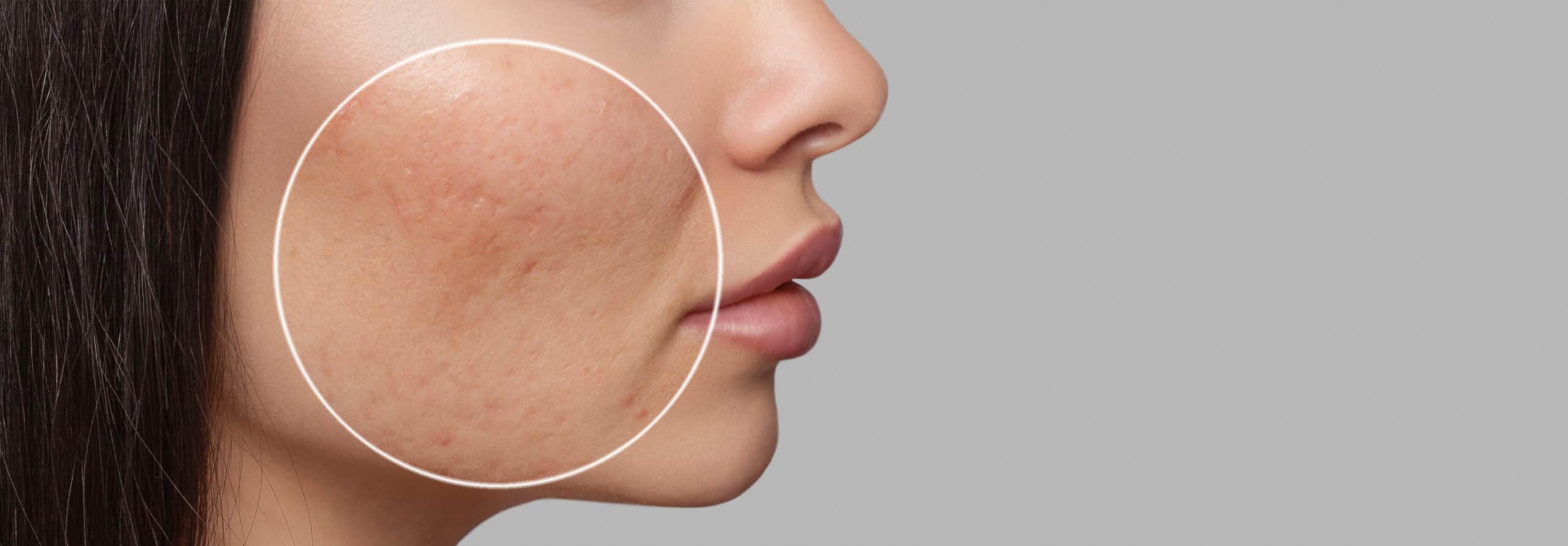MEDICAL DERMATOLOGY
What are Acne Scars?
Acne scars are the marks left on skin that has been affected by acne. They can be triggered by cystic lesions, picking and scratching. Acne scars most often appear as red or brown marks on the skin and can also look like indentations, giving the skin a pitted appearance. Acne scars can worsen the mental and emotional stress caused by the condition of acne.
Signs and Symptoms of Acne Scars
Acne scars stay on the skin in the long term and can often appear worse as we age due to the loss of collagen in the skin and the subsequent loosening of the skin. There are treatments, however, that can significantly reduce the appearance of acne scars.
What Causes Acne Scars?
Acne conditions that penetrate the skin damage both the skin and the underlying tissue. As the acne begins to heal, the body produces collagen which provides support and elasticity to the skin. When too much or too little collagen is created by the body, this leaves a visible scar.
Certain conditions or behaviors can increase acne scars, including:
- Inflammatory or cystic acne
- Avoiding or delaying treatment of acne
- Picking at, scratching or squeezing acne
- A close blood relative with a history of acne scars
The stress of having acne can also increase behaviors such as picking or scratching.
How Acne Scars Are Treated
Doctors and dermatologists have made some significant headway in treating acne scars in recent years. Options for treating this skin condition include:
- Acne scar surgery – A minor surgery involving the lifting of pocketed scars.
- Resurfacing procedures – Procedures that smooth the surface of the skin and include laser skin resurfacing, chemical peels, dermabrasion, and microdermabrasion.
- Fillers – Injected fillers that can reduce the appearance of depressions in the skin. A dermatologist might use cosmetic fillers, collagen, or a patient’s own body fat.
- Skin tightening – Techniques such as radiofrequency treatment are used to tighten the skin and reduce sagging and dips in the surface of the skin.
- Collagen-induction therapy – Sometimes referred to as micro-needling, this intervention encourages production of collagen in your skin. The affected area is subjected to small pinpricks; as the area heals, it produces more collagen, improving the tone and evenness of the area.
How Long Do Acne Scars Last
If you have experienced acne scarring, you might find yourself wondering— how long do acne scars last? Typically it can take anywhere from three to six months for acne scars to fade. More severe scars might take as long as six months to fade, while lighter ones can fade in as few as three months.
When acne scarring involves pitting in the skin, these dips in the skin can remain after the discoloration of a scar has faded. Treatments for acne scars can significantly reduce the time it takes for them to fade.
Do Acne Scars Go Away?
Can acne scars go away with time? Very often, they do. When acne scarring is particularly severe, however, it can leave permanent marks on the skin. In these scenarios, a wide variety of dermatological procedures can help the situation, including laser treatments, topical retinoids and microdermabrasion.
How to Prevent Acne Scars
One of the best ways to prevent acne scars is to avoid picking at the skin when acne develops or scratching at scabs if they form. It is also a good idea to avoid popping pimples whenever possible. Taking preventive measures against the formation of acne is also one of the best ways to limit scarring in the long run.


